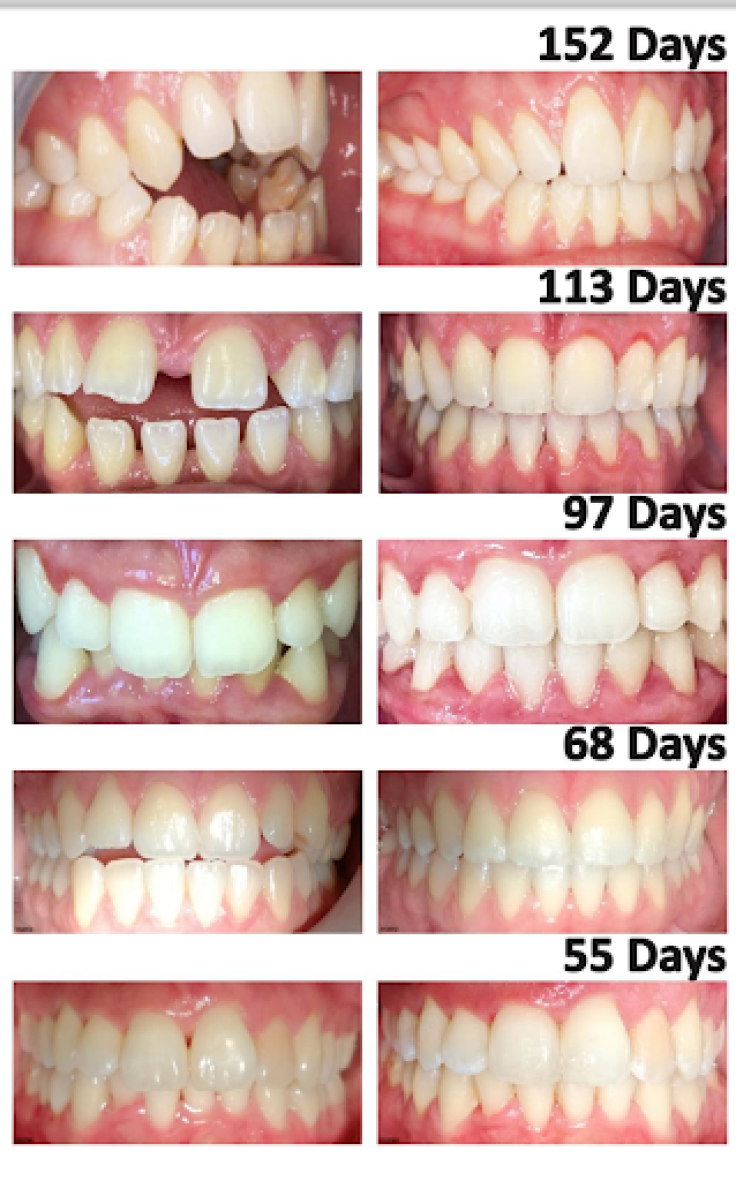
In the early 1990s, Dallas orthodontist, Dr.Anthony Viazis pioneered a new orthodontic bracket system by publishing his clinical findings on a fast way of moving teeth safely by using concurrent crown and root tooth movement with triangular-shaped brackets for dental braces. This technology is the foundation for Fastbraces Technologies bracket systems, which are available internationally and have reduced the duration of orthodontic treatments to as little as 60-90 days. This article aims to explore the unique mechanisms and techniques associated with Fastbraces in further detail, delving deeper into the science that allows Fastbraces to fix smiles so quickly.
Orthodontic treatment relies on the intricate process of alveolar bone remodeling while orthodontic tooth movement is a complex process involving a cascade of cellular and biochemical events driven by osteoclasts, osteoblasts, prostaglandins, neuropeptides and cytokines. These elements collectively work to reposition teeth within the alveolar architecture during treatment. Compression on the periodontal ligament side triggers alveolar bone resorption, while tension on the opposing side stimulates bone formation. This dynamic process governs orthodontic therapy, where interactions between teeth, the periodontal ligament and the alveolar bone follow biomechanical principles.
At their core, orthodontic treatments rely on alveolar bone microfractures to reshape alveolar bone in favorable ways. By creating microfractures to induce bone resorption and formation, dentists and orthodontists can safely move teeth within the jaw, straightening crooked teeth and giving patients the smile they've always dreamed of. Applying light pressure to a tooth compresses the periodontal ligament, inducing bone resorption. On the other side, opposing tension induces bone formation or the emergence of new bone tissue. This balance between light pressure and tension is the foundation of Fastbraces treatments which deliver low forces with minimal discomfort to the patient. In fact, the inventor never prescribed pain medication to his thousands of patients.

The treatment approach of Fastbraces promotes the axial ("horizontal") restoration of alveolar bone, analogous to the sagittal ("vertical") restoration of alveolar bone in periodontal treatment planning and therapy. This treatment evaluation and protocol aligns with the principles of modern dentistry, which prioritize the restoration of teeth affected by caries and the preservation of root structure through conventional root canal treatment.
Building on this scientific foundation, Fastbraces sets itself apart from traditional orthodontic treatments through its focus on pretreatment assessments, which use predictive parameters to ensure effective treatments. Before treatment starts, doctors utilizing Fastbraces make measurements such as cupping depth, probing width, probing distance of overjet or underbite and probing height of overbite or open bite. Fastbraces refers to these measurements as the Alveolar Bone Formula (ABF) score. Quantifying the extent of bone remodeling a specific patient needs and considering factors such as age and genetics allows doctors to predict patients' treatment timelines. This approach utilizes alveolar bone morphology as a biologically based constant, expanding the scope of restorative dentistry to include the restoration of the alveolar bone. By incorporating quantitative analysis of alveolar bone deficiencies prior to orthodontic treatment, clinicians can enhance their ability to diagnose, plan and monitor treatment progress.
A patient's predictive parameters are usually classified according to six categories depending on the extent of treatment necessary: mild, moderate, severe, very severe, extremely severe, and exceptionally severe. The integration of these parameters into the ABF score underlines their uniformity across all dimensions of alveolar bone remodeling (axial/horizontal, coronal and sagittal) contributing to the predictability of orthodontic treatment times. These parameters correlate with the extent of bone development or resorption required during treatment providing quantitative assessment of alveolar bone conditions and their impact on treatment duration.
Using this information, clinicians can move the crowns and roots of the teeth towards their final position at the same time from the outset of treatment. This contrasts with traditional orthodontic treatments, which generally move crowns during the first year of treatment and roots during the second year. Fastbraces accomplishes this concurrent movement by using triangular bracket and square wire systems with elevated slots and unique elbow designs that constantly change the equation of the wire flexibility as the teeth move. The bracket systems with variable wire flexibility upright the roots of the teeth with a single archwire with low forces and minimal friction as tooth movement occurs. This allows for orthoeruption or the uprighting of displaced roots into a straight position as if the tooth erupted in that position naturally. Orthoeruption results in the alveolar bone remodeling and restoration of the dental arch to its appropriate natural size and shape for each specific mouth. Furthermore, the way Fastbraces technology stimulates bone growth reduces the need for more troublesome procedures such as tooth extraction or jaw surgery because nonextraction therapy can now be achieved through bone growth remodeling as the alveolar bone reacts to a tooth erupting to its correct place in the arch.
Fastbraces are an example of the continued evolution of orthodontic treatments and technology. From the earliest examples of dental braces made from materials such as gold to the recent developments of brackets and aligners, the science of straightening teeth has come a long way since its inception. As dentists and orthodontists continue to develop new technologies and innovations like Fastbraces, more people around the world will experience the life-changing benefits of having straight teeth and a beautiful smile.







